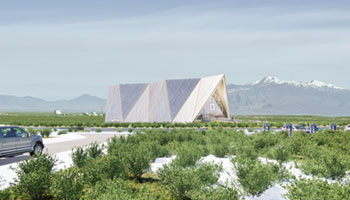
Breaking News
 James O'Keefe: My entire speech at AmericaFest 2025. We're not stopping. Join us to expose..
James O'Keefe: My entire speech at AmericaFest 2025. We're not stopping. Join us to expose..
 U.S. vs. Chinese Military Comparison – Focus on Asia-Taiwan Scenario
U.S. vs. Chinese Military Comparison – Focus on Asia-Taiwan Scenario
 DoJ Sues Four More States for Failing To Produce Voter-roll Data
DoJ Sues Four More States for Failing To Produce Voter-roll Data
 World's Largest Aviation Giant Abandons Google Over Security Concerns
World's Largest Aviation Giant Abandons Google Over Security Concerns
Top Tech News
 Perfect Aircrete, Kitchen Ingredients.
Perfect Aircrete, Kitchen Ingredients.
 Futuristic pixel-raising display lets you feel what's onscreen
Futuristic pixel-raising display lets you feel what's onscreen
 Cutting-Edge Facility Generates Pure Water and Hydrogen Fuel from Seawater for Mere Pennies
Cutting-Edge Facility Generates Pure Water and Hydrogen Fuel from Seawater for Mere Pennies
 This tiny dev board is packed with features for ambitious makers
This tiny dev board is packed with features for ambitious makers
 Scientists Discover Gel to Regrow Tooth Enamel
Scientists Discover Gel to Regrow Tooth Enamel
 Vitamin C and Dandelion Root Killing Cancer Cells -- as Former CDC Director Calls for COVID-19...
Vitamin C and Dandelion Root Killing Cancer Cells -- as Former CDC Director Calls for COVID-19...
 Galactic Brain: US firm plans space-based data centers, power grid to challenge China
Galactic Brain: US firm plans space-based data centers, power grid to challenge China
 A microbial cleanup for glyphosate just earned a patent. Here's why that matters
A microbial cleanup for glyphosate just earned a patent. Here's why that matters
 Japan Breaks Internet Speed Record with 5 Million Times Faster Data Transfer
Japan Breaks Internet Speed Record with 5 Million Times Faster Data Transfer
It's not a tiny home. It's actually a nuclear microreactor powerplant

With backing from Sam Altman, the CEO of OpenAI and makers of ChatGPT, Oklo Inc. – a company that recycles nuclear fuel and uses it in its nuclear fission microreactor dubbed Aurora – says this will be possible. Not only possible, but in Oklo's plans.
As Aurora's design is tailored towards remote areas, Oklo imagines the reactor site serving as a community hub. Locations where winters can be long and bitter often impact the mental well being of residents. By adding this type of comfortable social venue, Oklo considers it to be another added benefit.
For those of us who were alive during the 80s and 90s, the thought of swimming in an indoor pool at your local nuclear power plant probably gives us mental images of Homer Simpson eating glowing green donuts. Oklo assures us that it is entirely safe. Not only will it be safe, but the microreactor will produce almost exactly zero greenhouse emissions, nor will it produce nuclear waste. By using recycled nuclear fuel, it actually lessens the amount of existing nuclear waste.
The microreactor is designed with a sort of "fire-and-forget" ideology for the most part. It's called a "microreactor" not only for its small footprint but also for its small output at 1.5 MW – enough to power around 1,000 homes in ideal conditions. It differs from a Small Module Reactor (SMR), which is designed for roughly 50-125 MW of output. Traditional nuclear reactors can output as little as 500 MW up to the gargantuan Kashiwazaki-Kariwa Nuclear Power Plant in Japan which outputs 8,200 MW (8.2GW).
The Aurora microreactor has passive safety features and a sealed core. It has no moving parts and can cool itself and shut down without human intervention. It's designed to run continuously for up to 20 years before needing to be refueled. Rather than using a pair of forceps to pull out a green glowy rod – again, à la Homer Simpson – the entire core is simply removed and replaced with another sealed core containing the next batch of recycled nuclear fuel.
The Aurora uses high-assay low-enriched uranium-235 fuel (HALEU) in a fairly unique fast reactor design – that is, it uses high-energy neutrons to maintain the nuclear chain reaction. Traditional nuclear reactors use a moderator (typically water) to slow down neutrons to make chain reactions more manageable, stable, and with higher probability, given that they're using a much lower enrichment of 3-5% uranium-235.

 Advanced Propulsion Resources Part 1 of 2
Advanced Propulsion Resources Part 1 of 2

